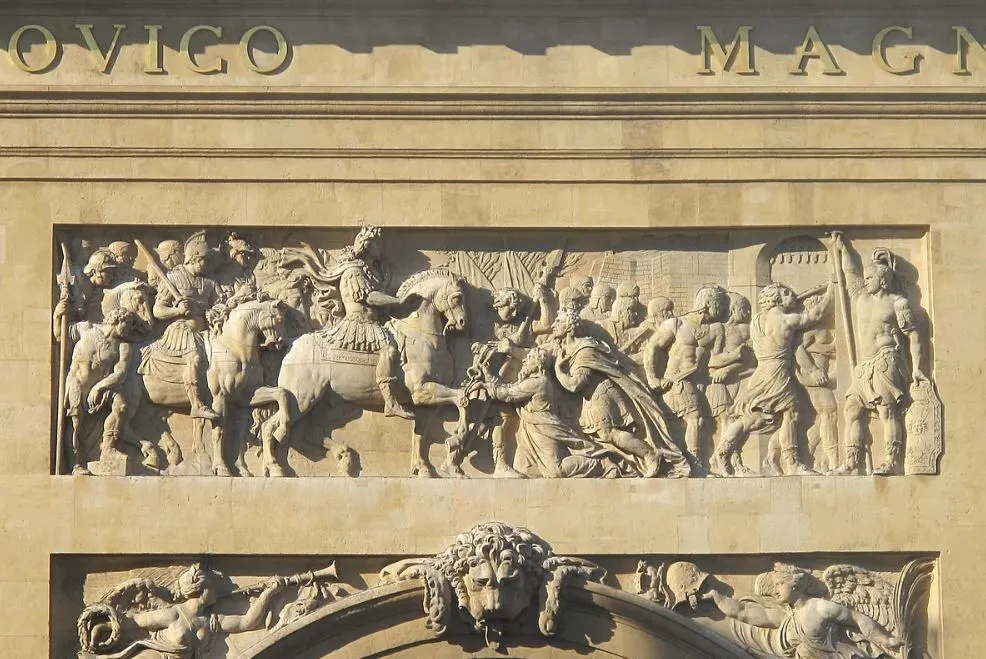The French capital is home to one of the most famous triumphal arches in the world, but that’s far from the only monument of this type in the city.
I’m obviously talking about the Arc de Triomphe, one of the best-known landmarks in Paris.
Another famous arch in Paris can be found just north of the historical heart of Paris and has a history that goes back to the Middle Ages.
In this article, you’ll discover some of the most interesting facts about the Porte Saint-Denis, a fantastic monument in the City of Light.
1. It’s located in a district that was named after it
The Porte Saint-Denis is a monumental arch that is located in the Saint-Denis district of Paris. This is situated in the 10th arrondissement of the city.
To get a better idea of its location, this is just north of the historical heart of Paris with Notre Dame Cathedral and just northeast of the Louvre Museum.
Even though it appears to be rather close to these famous tourist spots, it’s quite a distance to walk there, though. Luckily, the metro station “Strasbourg Saint-Denis” is located right across from the arch.
This prominent landmark stands at the crossing of the Boulevard de Bonne-Nouvelle and the Boulevard Saint-Denis, two major thoroughfares in this part of the city.

2. It was initially part of a 14th-century defensive wall
The monument has a history as a defensive structure that was part of the medieval Wall of Charles V. This wall protected the historical heart of the city.

Built between 1356 to 1383, this was one of many city walls that once protected Paris and the historic gate was one of the access points.
This wasn’t the oldest wall in Paris because the Wall of Philip II Augustus predates it by almost 2 centuries as it was built between 1190 and 1213.
As you can see, this gate had 2 gates and featured 4 fortified towers. It was demolished in the 17th century together with the medieval wall.
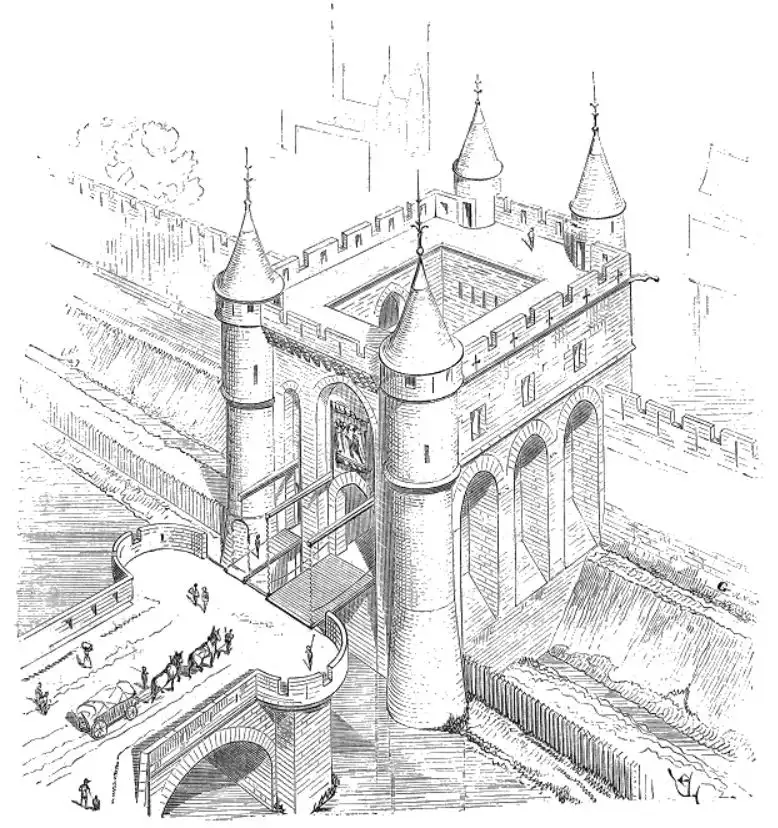
3. King Louis XIV commissioned the current arch in the 17th century
The medieval walls didn’t suffice to protect the city from cannons with gunpowder, so the old wall was scheduled to be demolished in the 1640s.
This redevelopment project was only completed in the 1670s and this was the time that King Louis XIV (1638-1715) commissioned the Porte Saint-Denis we can admire today.
As you can see, the arch bears the letters “LUDOVICO MAGNO“, ” or “Louis the Great,” the nickname of the longest-reigning monarch in European history.
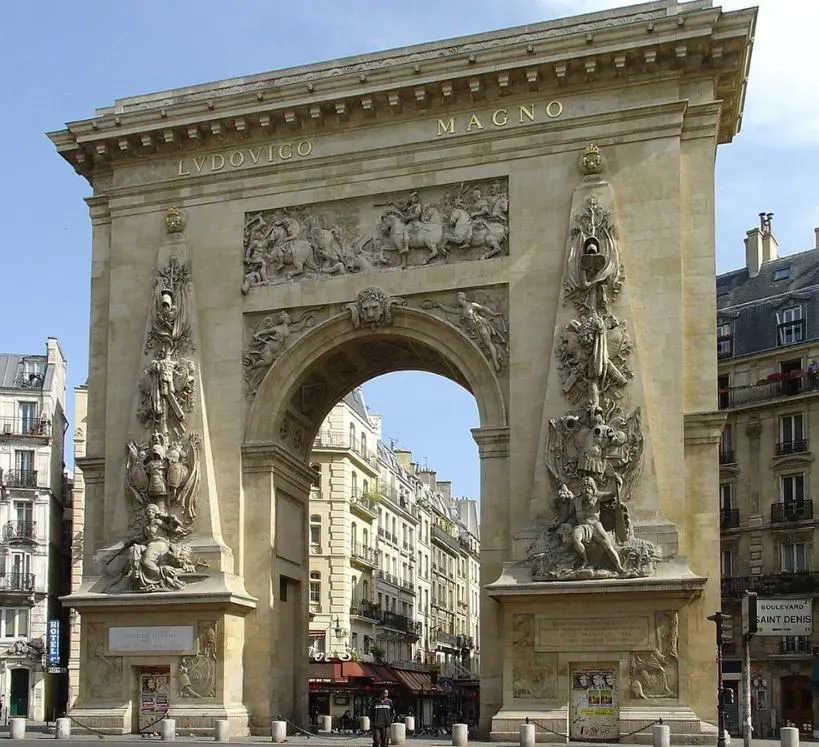
4. It was the first of the 4 major arches that were constructed in Paris
The arch was completed in 1672 and was the first of the 4 major triumphal arches that were constructed in Paris.
The Porte Saint-Martin, a heavily rusticated arch, was completed just 2 years later in 1674, while the beautiful Arc de Triomphe du Carrousel (1806-1808) was completed in the early 19th century.
The most famous arch in France, and arguably in the entire world, was commissioned by Napoleon in 1806 but wasn’t completed until 1836.

5. The French architect who designed it was inspired by a famous arch in Rome
King Louis XIV hired François Blondel (1618-1686), one of the most renowned architects in French history, to design the arch.
Known as “The Great Blondel,” the architect sought inspiration in Rome, more specifically, the Arch of Titus, a 1st-century Roman triumphal arch.
The main difference between both monuments is the obelisks that flank the central archway of the Porte Saint-Denis. The archway of the monument in Rome is flanked by fluted Corinthian columns.
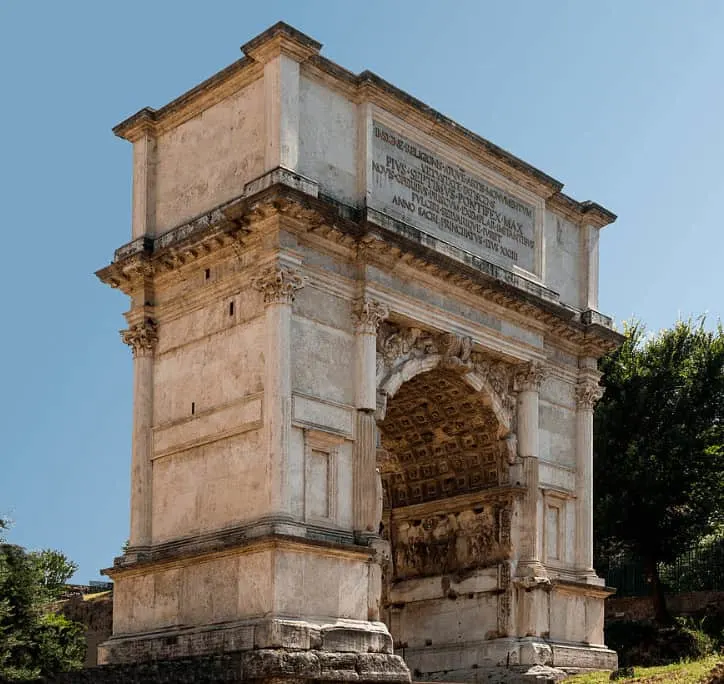
6. It’s about half as high as its more famous 19th-century counterpart
The volume of this particular arch is significantly lower than that of other famous arches in Europe. A side view clearly shows that the arch is only 5 meters (16 feet) deep.
The other dimensions of the Porte-Saint-Denis are as follows:
- Arch height: 24.65 meters (80.9 feet)
- Arch width: 25 meters (82 feet)
- Archway height: 15.35 meters (50.4 feet)
- Archway width: 8 meters (26 feet)

7. The southern façade features reliefs depicting the French crossing a major river
Triumphal arches have been constructed for a variety of purposes, but the main purpose was to commemorate victories in wars.
That’s why the Romans built them, and that’s also why King Louis XIV of France commissioned this monument.
Because of this, he also hired the sculptors Michel Anguier (1612-1686) and his brother François who he gave the task to commemorate the capture of Franche-Comté in 1668.
The French artist created a relief titled “The Passage of the Rhine” which is related to this event in French history.
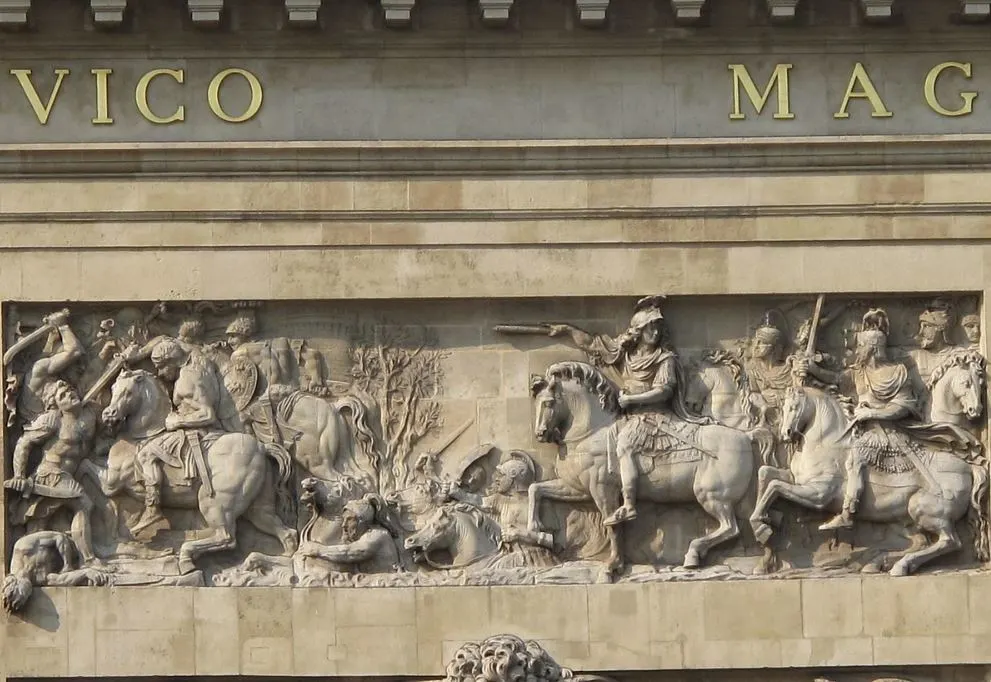
8. The northern façade depicts a scene of a French victory during the Franco-Dutch War
The brothers also carved the relief on the northern façade of the monument and this work is titled “The capture of the town of Maastricht.”
This was a crucial victory of the French army during the Franco-Dutch War (1672-1678), the event that resulted at the end of the Dutch Golden Age.
As you can see, it depicts the triumphant French who parade in front of the surrendering Dutch, another influence from the ancient Romans
